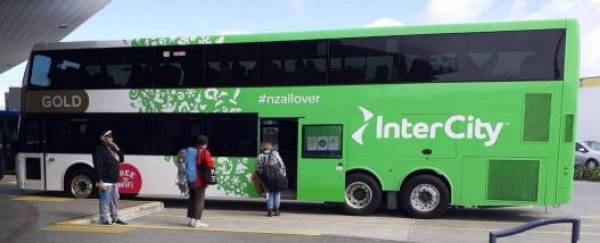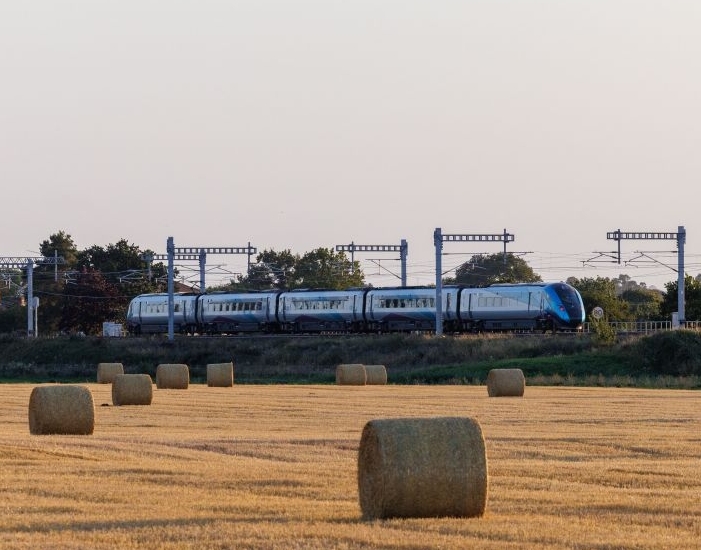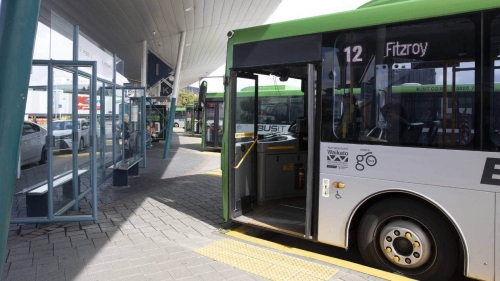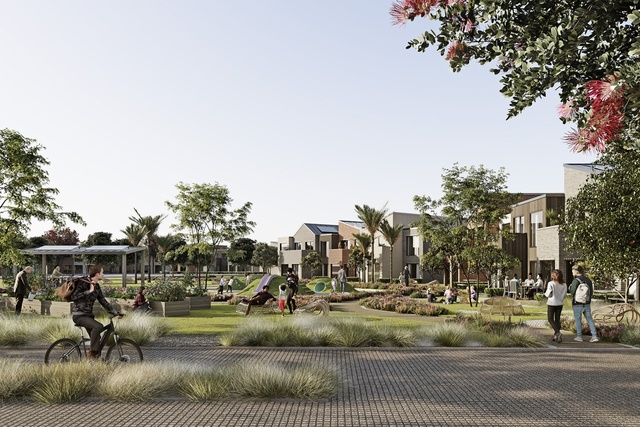Opinion - Long distance coaches form an existing, widespread transport network that many New Zealanders do not give much thought to. Yet they are an important service for people living in and near towns and smaller cities, connecting them with each other and with people in the larger cities. They are especially important for disadvantaged groups, including Māori and Pacific people and the disabled.
They are vital for those who cannot drive or do not want to drive, such as the very young and older members of society. For many communities, long distance coaches are the only alternative to driving or flying – few towns have airports or passenger rail connections. In terms of low emissions transport options, in New Zealand coaches provide the only longer distance option to most of the population.
Take three examples of someone wanting to travel from within our wider district. In these examples, it is worth noting that coach schedules have been reduced in the last two years due primarily to the wider effects of the pandemic.
Paraparaumu to Palmerston North on a weekday. There is no train going north, until the late evening when the Capital Connection runs. InterCity has buses running at 8.40am, 10.55am and 4.15pm. In the weekend, there is no train going to Palmerston North.
Levin to Wellington on a Saturday. The Capital Connection does not run on a Saturday. But there are quite a few InterCity options. These are 4.55am (this is an overnight bus from Auckland passing through), 10.40am, 2.10pm, 4.10pm and 7.04pm. Otaki to Napier on a weekday. No train. One InterCity bus at 11.20am.
The government helped fund the introduction of the Te Huia train between Hamilton and Auckland. But subsequently, no enthusiasm has been shown for supporting a more widespread revival of regional passenger rail services. The release of the Emissions Reduction Plan and subsequent budget announcements were especially disappointing for those who understand the climate, economic and well being benefits of rail.
Active campaigning on the clear need for an upgrade of rail services between Wellington and Palmerston North, and between Wellington and Masterton resulted in nothing from the government. While it was pleasing that government owned KiwiRail has announced the Northern Explorer service will be resumed in September, the irregular service and the high-ticket prices show it is not aimed at New Zealand families.
Long distance coaches are even further off the radar of transport policy makers and the government. Perhaps this is not surprising. As users of these services, we know they do not provide the level of service that passengers expect in most advanced economies. Yet improving them would not involve the billions being spent on motorways and other road expansion.
A key problem is that coaches are not seen as part of New Zealand’s public transport network. One result is they cannot offer publicly-funded discounts that are available to other public transport services, eg Goldcard free fares or the recent half fares initiative. It also means they are not well connected into local body transport plans, integrated ticketing, journey-planning and timetabling information.
Yet once long distance coaches were a key part of New Zealand’s public transport network. NZ Rail once ran both the passenger trains and the long-distance coaches, integrating them in a way that made the best use of each mode. But as part of the privatisation of rail that took place in late 20th Century the bus services were sold and became the privately owned InterCity services.
Post privatisation, there have been a couple of attempts for new start-ups to compete with the InterCity group. Nakedbus, then Manabus competed on some key routes before ceasing operation in 2018.
In general, people prefer train trips to buses, but buses can go to many places that trains cannot. Long distance coaches are much more comfortable than the metro buses most people are familiar with, and they can be improved further, in a variety of ways. The first, pretty fundamental improvement, would be to have on-board toilets. Overseas, this is standard for such coaches. Buses could also be better designed to allow people with disabilities to use them.
Buses should be set up to carry bikes. This could be via bike racks on the back, as used by Flixbus in Europe, or having trailers on some services. It would be great to be able to get to many of New Zealand’s cycle trails.
Off bus infrastructure needs improvement. In most places passengers wait out in the cold in open sided bus shelters or under the shelter of shop fronts. The InterCity depot in Auckland is a disgrace. The newly rebuilt stop at Taupo, an important interchange, is also a disgrace. Passengers have to do a 400 metre walk to toilets with no cover from the weather. Buses load and unload also with no cover. In contrast, there is now an excellent coach depot at Manukau in South Auckland. Those waiting for buses on the Kāpiti Coast and in Horowhenua wait in unheated open sided bus stops.
While green growth enthusiasts talk about the eventual introduction of electric planes or those powered by hydrogen, this technology is already being trialed in coaches. The already very low emissions will become even lower.
The government does not need to own the buses to bring them into a high quality, affordable, low emission network. Services could be contracted, or minimum standards for offering services could be legislated. There is also plenty of funding available for investment in regional transport. Currently it is used to prop up the aviation industry, but to support a low emission economy, this ratepayer and taxpayer money needs to be transferred from supporting airports and airlines, as has Kāpiti District Council in supporting Air Chathams, to investing in the long distance coach and intercity rail networks.
Coaches have a comprehensive reach; they are needed to fill the many (hopefully temporary) gaps in the rail network, and to reach communities where rail will never go. In a staged plan, coaches can harness wider catchments of ridership, helping to improve the return on investment in passenger rail improvements.
To meet our climate commitments and economic and well being goals, our Government needs to re-establish a national, low-emissions public transport network that serves all our regional communities. Planning a steady improvement in passenger rail needs to be underway, but equally important is planning the complementary network of long distance coaches. The flexibility and coverage of coaches means gains can be made in the short term, providing ample opportunity for strong leadership to be rewarded with public support within political time frames.
An opinion by Heidi O’Callahan and Paul Callister, originally published in Low Carbon Kapiti on 31 July 2022
For further information concerning the points raised in this opinion -




